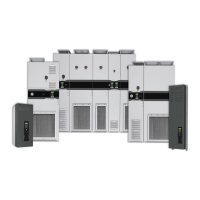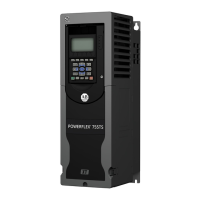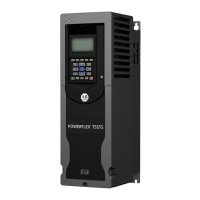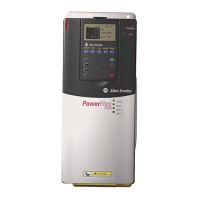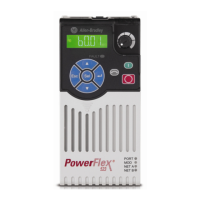Rockwell Automation Publication 750-RM100A-EN-P - August 2019 121
Application References Chapter 11
5. If the 10007 TorqPrv Spd Band fault occurs, investigate the following:
• Verify that the brake is disengaging properly. A faulty brake rectifier can
prevent the brake from disengaging.
• Verify that the current limit is not impeding acceleration and
deceleration. The drive is undersized or the acceleration and
deceleration times are too short.
• Verify or adjust parameter 9:54 [Speed Dev Band] and/or parameter
10/11:906 [System BW].
• Verify that the position, velocity, and torque loops are tuned properly.
See the PowerFlex 755T Flux Vector Tuning Manual, publication 750-
AT006.
Troubleshooting information can be found in Knowledgebase Article
1061994, PowerFlex 755T in Lifting Applications.
Anti-Sway Applications
Anti-Sway is a PowerFlex 755T drive feature that helps to minimize the
pendulum effect that can occur when a trolley/gantry of a crane/hoist system
moves a suspended load. The distance between the trolley and the load
determines the sway frequency. This frequency can be notched from the velocity/
position command of the drive so that the pendulum effect on the load is not
excited as a result of a horizontal move. Note that the pendulum can still be
excited from external disturbances such as wind or from non zero initial
conditions like picking up a load off center.
Calculating the Sway Frequency
In crane/hoist applications, the sway frequency is only a function of cable length
L. The sway frequency (Reference Notch Filter Frequency) can be calculated
from the cable length or derived from experiment.
• The frequency calculation in [Hz] is a function of cable length L in
[inches] and the acceleration of gravity g = 386 [inches/sec
2
].
Where g = acceleration due to gravity
9.80665 m/sec
2
32.17417 ft/sec
2
386.09 in/sec
2
Where L = length in meters, feet, or inches. Gravity and length must have
the same distance units.
f
1
2
------
g
L
---
=
Equation 1
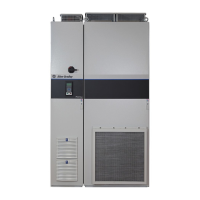
